One year on
Dec 19, 2017

It’s now 12 months since the seismic events that ripped apart Kaikōura and its surrounding communities, changing lives and landscapes forever. The town is slowly rebuilding, and the locals putting the pieces of their lives back together again. Kaituhi Deborah Nation reports.
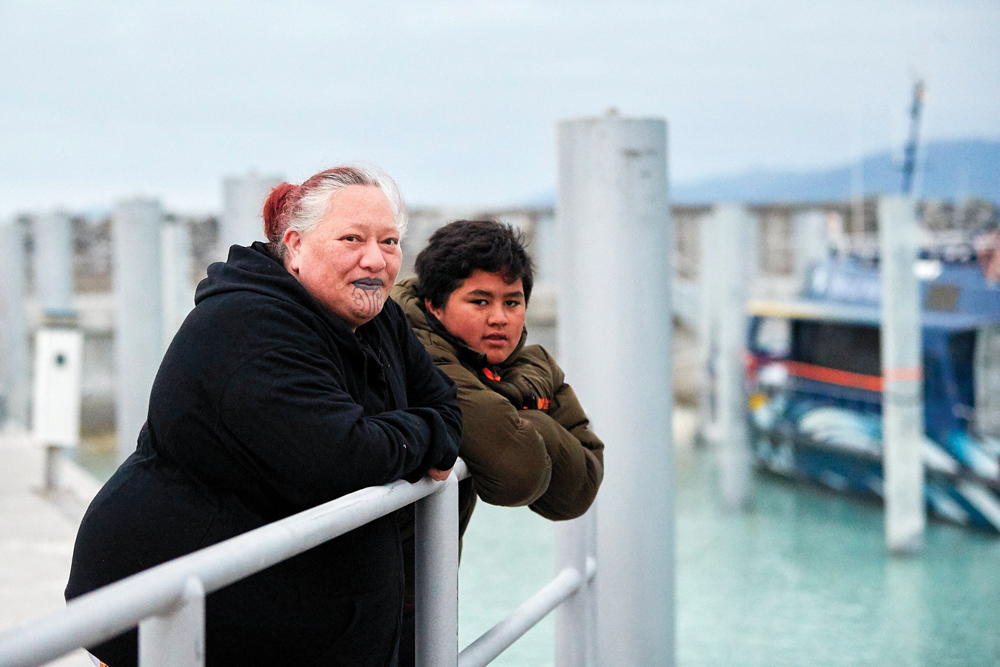
Hariata Kahu, Te Rūnanga o Kaikōura chair, and Maihi Allen at the opening of Kaikōura Harbour.
Head into a Kaikōura supermarket on a Thursday night and you will find the aisles swarming with fluoro vests. An ever-growing number of construction workers are paid up, thirsty, hungry, and ready to spend.
What has been lost in casual customers in this once stopover town between Christchurch and Picton is rapidly being made up for in the business of post-quake reconstruction.
Locals admit this severely damaged coastal region has taken a hit as far as tourism is concerned, but is hustling as epic road, building, and harbour repairs forge ahead.
Kaikōura currently enjoys almost zero unemployment, and is even struggling to find people willing to take on lesser-paying hospitality jobs, as restaurants, hotels, and other providers gain from the huge earthquake repair operations taking place.
A temporary road workers’ village for 300 occupants is at capacity, while others are renting or staying in motels.
Kaikōura Rūnanga Chair Hariata Kahu works as an Earthquake Navigator, and also works for the Alcohol and Drug Service Te Tai o Marokura, based at Takahanga Marae. She says the rebuilding of the town and coastal highways is a pull for people to get off the unemployment benefit, and to become road workers.
Hariata says 60 rūnanga whānau have been trained by Spray Marks, the traffic control organisation of the rebuild, which has more than 200 employees operating from Kaikōura.
Businesses have sprung up in response to the massive repair taking place. Daily lunches are produced. Buses are chartered to transport workers to and from worksites, where lollipop operators control single-lane access on inland and coastal roads, as revised completion targets extend on into the new year.
But despite this, local iwi feel there’s an opportunity lost in the restructure of Kaikōura, which they say doesn’t compare favourably with the Christchurch experience.
“A year on, and we are still trying to strengthen partnerships and engagement,” says Te Rūnanga o Ngāi Tahu Earthquake Response and Recovery Director, Robyn Wallace.
“Everyone agrees that rebuilding roads and reconstructing the harbour requires a huge effort. However, the [Kaikōura District] Council, NCTIR [North Canterbury Transport Infrastructure Recovery], and Cabinet have at times ignored the best effort of Te Rūnanga o Kaikōura.
“There continues to be deep concern about the social, environmental, economic, and cultural impacts these works will have on the township and coastline into the future, if they continue without input from Te Rūnanga o Kaikōura.”
Robyn points to the Coastal Cycleway from Hurunui to Marlborough, which involves the development of information boards and APS OnLine.
“With land movement, some of the roadway has been moved into coastal marine areas, and there is clearly a lack of understanding of the history.
“There are stories to be told, but when human remains are involved, there are also sensitivities to be observed. Not all stories are for sharing. A partnership is needed to determine that whatever is shared is appropriate, and to protect and preserve the cultural significance of the areas.”
When Kaikōura experienced the full force of the magnitude 7.8 earthquake, two minutes after midnight back on November 14th last year, local iwi responded instinctively.
As people rushed to higher ground to escape the inevitable tsunami surges which followed, they found a natural gathering place at the Takahanga Marae.
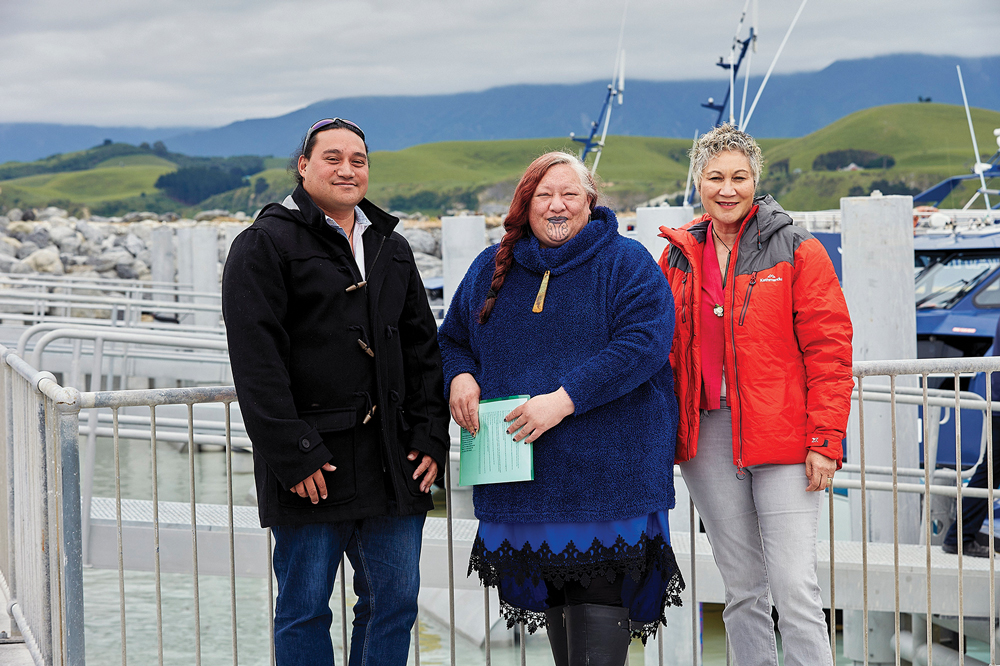
Rawiri Manawatu, Hariata Kahu and Robyn Wallace at the opening of Kaikōura Harbour.
For local Māori, a communal response was second nature. They naturally emptied their cupboards and stock from a thriving seafood business to offer traumatised locals and tourists cups of tea and meals. These famously included the local delicacies of blue cod and kōura. Stunned tourists will never forget either the quake or the remarkable hospitality that softened the blow.
Te Rūnanga o Ngāi Tahu jumped into action airlifting in care packs and supplies, alongside police first responders. Thirty self-sufficient volunteers from Te Rūnanga o Ngāi Tahu whānau offered their services immediately.
Experienced in the earthquake response and recovery of both Christchurch and Kaiapoi, Robyn Wallace knew that local people tend to stay at home if they can.
“The biggest need alongside the locals was manaaki for the influx of hundreds of visitors that descended on the marae.”
Te Rūnanga flew in builders, a chef, an electrician, and a plumber. It took a great deal of manpower to keep things operational, and 10 days to two weeks to get things settled. “Once tourists were evacuated by ships, that’s when Te Rūnanga o Ngāi Tahu pulled back, and the marae whānau began looking inwards,” recalls Robyn.
“Te Pūtahitanga o Te Waipounamu Whānau Ora navigators were put in place immediately, but it was some months before the District Health Board followed suit.”
If Te Rūnanga and Ngāti Kurī hadn’t swung into action, the situation following the quakes would have been very different.”
“We have had people from all over the world returning to Kaikōura to express their thanks,’” says Hariata Kahu.
Considering all this primary activity, Robyn Wallace is disappointed that unlike with the Christchurch earthquake emergency response, iwi were not included as a statutory partner for the subsequent Hurunui/Kaikōura Earthquakes Recovery Act 2016.
“Because we were not included in the Act, Te Rūnanga o Ngāi Tahu has had to draw down on its relationships, expertise, and experience as the iwi authority, in order to engage.”
Following the Canterbury earthquakes, Christchurch and Waimakariri local government authorities have actively sought a Māori presence in the recovering landscape. In contrast, Robyn says, “You could drive through Kaikōura and not know any Māori lived there.”
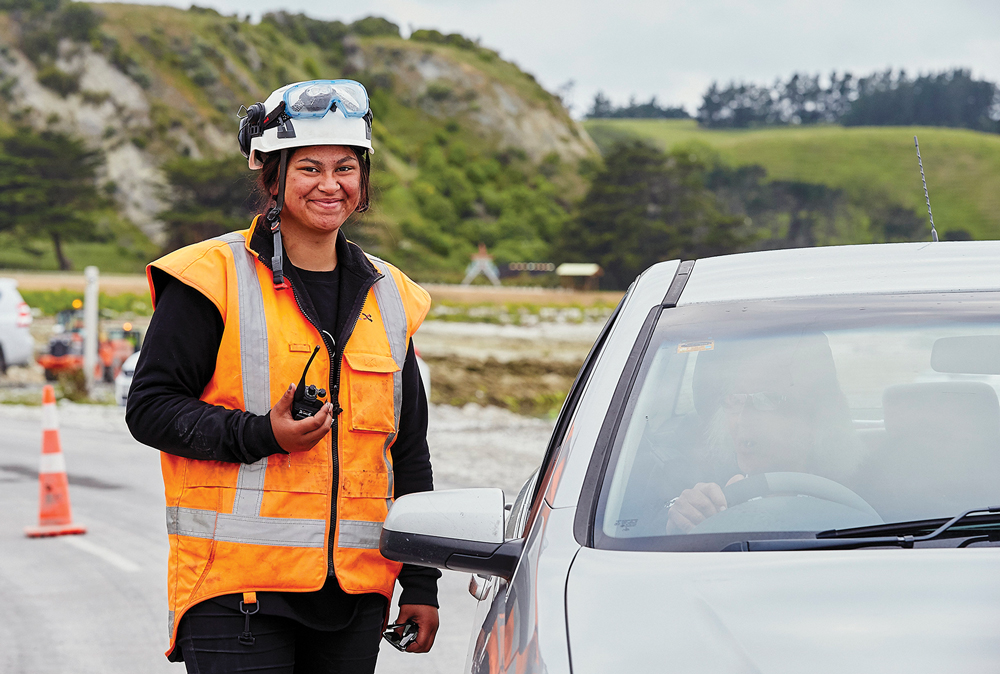
Kaikōura local Arahia Allen has been working on the recovery project.
The new Ōtautahi/Christchurch emerging from the devastation of the 2011 earthquakes reveals a timely shift in historical acknowledgement. The city is developing a new bicultural and multicultural emphasis. For Christchurch, the Matapopore Charitable Trust was created as the mana whenua organisation responsible for ensuring Ngāi Tūāhuriri/Ngāi Tahu values, aspirations, and narratives are realised in the city’s recovery. It is now showing exciting results, as the new shape of Christchurch emerges. “A similar opportunity is needed here”, says Robyn. “Especially given that historically, the Kaikōura coastline saw the largest Ngāi Tahu migration.”
Robyn recognises there has been a change of leadership both at council level, and within the hapū. But she protests that relationships between the organisations need to be ingrained, and shouldn’t depend on individual people. She points to existing Ngāi Tahu relations with the Waimakariri District Council by way of comparison. “They meet monthly with Ngāi Tūāhuriri, and discuss issues,” Robyn says.
Living and working in Kaikōura and working for the marae-based health and social service trust, Te Tai o Marokura, Hariata Kahu knows the people, town, and history. Her challenge is building relationships, educating the council, and building links by reaching out to the rūnanga and wider community.
While Hariata admits there was virtually no consultation between rūnanga and council, or with NCTIR – the main business arm of the rebuild – she says this is changing.
“It’s small steps, but we are getting there. Rather than just being called on to tick boxes, it’s becoming a partnership, with monthly and bi-monthly meetings finally getting underway,” Hariata says.
“One of the challenges is for council and Civil Defence to understand that we are an economic, environmental, and social entity. We are not a Red Cross welfare situation, but actually have an interest in the sea, land, and people. This includes fisheries and farming,” says Robyn.
Whale Watch, a Ngāti Kurī whānau business, was the catalyst for the Kaikōura of today, and the huge tourism boom in recent decades.
Hariata says local iwi need to be consulted on all environmental issues and anything of cultural significance. She says three cultural monitors have been set up permanently alongside road works because of the frequency of finding kōiwi (human remains). “We have a cultural process around that, and have worked out a compromise with the roading company so that work is not held up,” says Hariata.
“In the past, things would have stopped for the bones to be taken back to the marae. Now they are labelled and put aside in a container on-site. Whānau can visit and bring ferns and other greenery to their ancestors, and when the time is right and conditions are safe, they will be returned into the ground.” The largest quantity of kōiwi tangata has been found in slips on the Northern end of State Highway 1, and most likely originate from known pā sites and battlegrounds.
Access to kaimoana is the other strategic issue for the local hapū, Hariata says. “How can we maintain our customary take with full closure in place?” she asks. She says the hapū has managed to work around the Ministry for Primary Industries’ total fishing ban. “Tangihanga means we’ve exercised our cultural right regardless, and have been able to offer kaimoana at most tangi.”
“The value of Ngāi Tahu involvement at all levels is that we aren’t tied by bureaucracy,” Robyn Wallace says. “We are quite nimble, with our own resources and governance. We will not spend days and even weeks deliberating – we take action.”
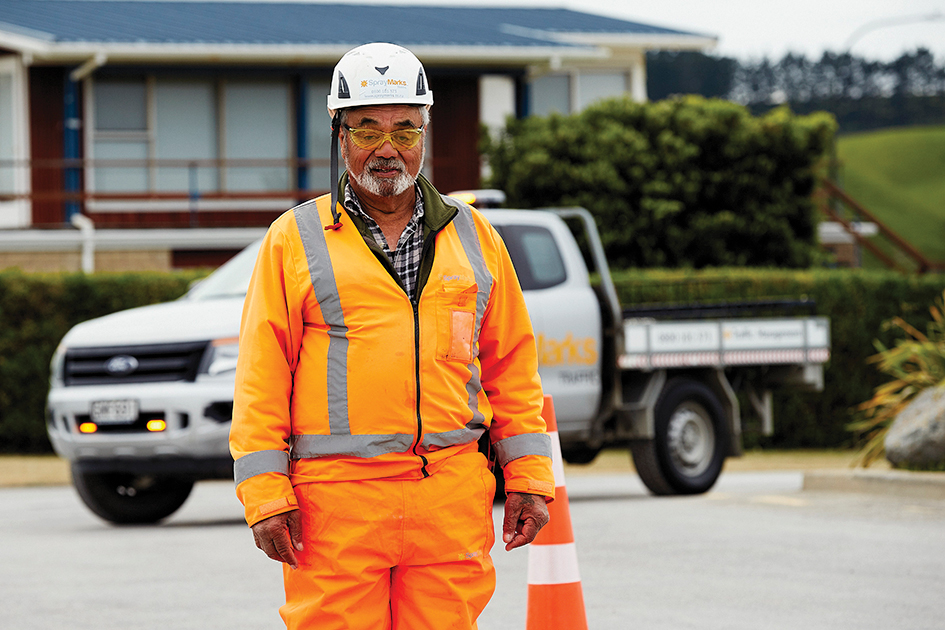
Major Timms.
Linda Ngata coordinates and supports more than seven “EQ Navigators”, funded by five agencies including Presbyterian Support Services, the Community Wellbeing North Canterbury Trust, Te Hauora o Ngāti Rārua (Marlborough), and Te Rūnanga o Ngā Maata Waka (Kaikōura and Hurunui).
EQ Navigators help over 300 individual households facing ongoing stress, isolation, and confusion. Monthly reports tell of exhaustion and tears amongst EQ’s most vulnerable members.
Having previously set up similar navigator-based support in Christchurch, the main differences she has noted here is the way many have cash settled with their insurance companies.
“I’m getting the sense that home owners here are not like city dwellers. These people have a do-it-yourself attitude, but they do need to be sure that the amount of money they settle on is enough. Finding expert advice in the current building boom is difficult.”
Another issue, says Linda, is accommodation. Despite the workers’ village, many rental properties are taken up with workers, so when people are ready to move out and have repairs done, there is nowhere for them to go.
Also, those with “124 notices”, which deem their properties uninhabitable, are still awaiting final decisions on their land. Linda says many have only been paid for the damage to their house, which might be quite limited. “Meanwhile, because of possible rockfall and land movement, they can’t stay there. They are in limbo and can’t get on with their lives.”
Isolation is another issue affecting small communities, such as Rākautara north of Kaikōura, and Ōwairoa. People have been cut off from Tuesdays through to Thursdays when roads are regularly closed. They join a backlog of traffic when roads open again on Friday to Monday nights. Linda says locals deal with it well, but bad weather experienced through October added to the inevitable closures along State Highway 1 and the inland roads.
An upsurge in family violence has also been noted by police, EQ Navigators, and welfare agencies such as the Red Cross. Linda notes the inevitable friction between locals and workers from out of town. And predictably, the stress takes its toll on relationships. “There are broken marriages, and a lot of hormones floating about.”
One year on, Kaikōura is showing all the traits of a frontier settlement. “The main street is sad, with the loss of key buildings, such as The Adelphi,” Linda says, referring to the 1923 Adelphi Hotel on the main street, demolished in July. “Beach Road is packed with huge workforce tractors, graders, and trucks. In some ways Kaikōura has lost its sense of security. Children used to be able to cross the road before all these heavy vehicles arrived.”
“Many people feel quite flat,” Hariata says. “We are still living and managing with what we’ve got, and are just getting on with the mahi.”
Meanwhile, the upsurge in work has drawn others home to Kaikōura because of the promise of work. “When income comes into the home it inevitably lifts spirits,” Linda says.
Robyn Wallace says there needs to be a model for extreme events like earthquakes, floods, and fires; with Te Rūnanga o Ngāi Tahu’s internal network and local decision-makers operating in conjunction with Civil Defence.
She believes post-disaster chaos can be avoided or at least lessened with Ngāi Tahu at the table to support the coordination of future responses.
“Ngāi Tahu is lucky. We have the capability to plan and implement our responses, and to call on our subsidiaries to help provide support.
“There is the opportunity to do things differently within the Ngāi Tahu takiwā, and to create something great.”
Harbour reopens
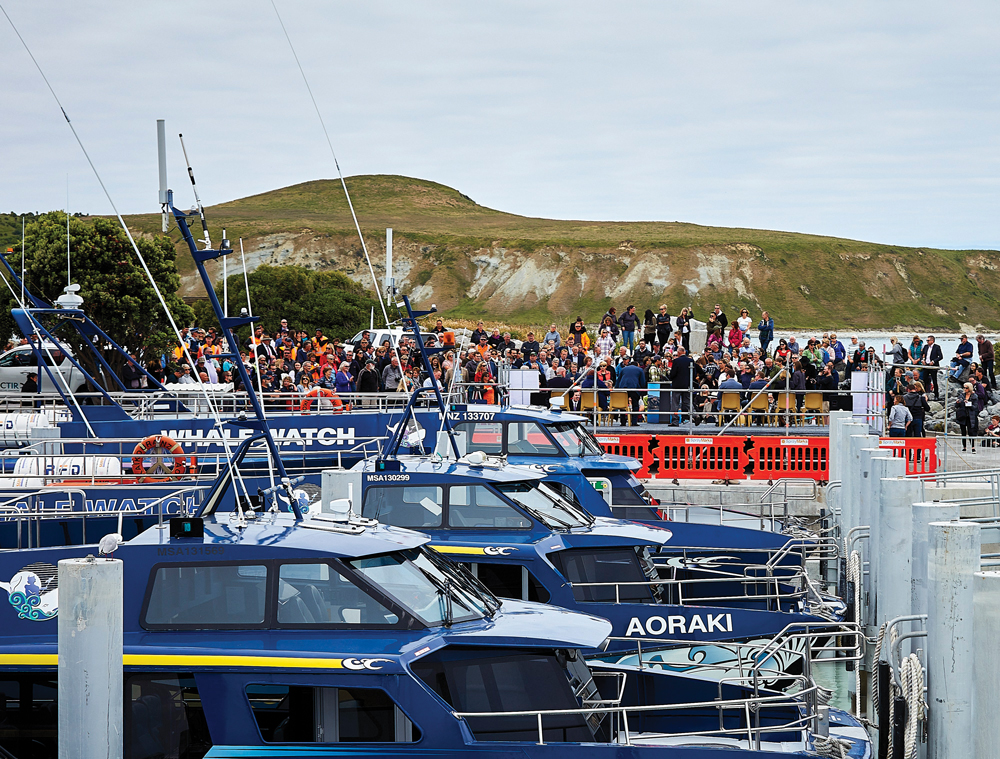
The Kaikōura community gathered to witness the opening of the harbour.
On 14 November 2017, the Kaikōura community gathered to commemorate the one-year anniversary of the earthquake, and to celebrate the official reopening of Kaikōura Harbour.
The 7.8 magnitude earthquake thrust the seabed up, severely damaging the harbour berths, jetties, and ramps. The harbour reopening was met with celebration, as it clears the way for local tourism and fishing businesses to return to full operation.
“We’re not out of the woods – we’ve got a lot more work to go,” says Brett Cowan, of Te Rūnanga o Kaikōura. “But it’s an indication of how diverse groups can come together in one collaboration with a common purpose. Our differences have been benched, and everyone has been getting onto dealing with the imminent need. In that regard we have a true sense of kotahitanga.”
At a dawn ceremony, Brett opened the harbour with a blessing on behalf of Te Rūnanga o Kaikōura, and unveiled a whalebone sculpture that commemorates the two lives that were lost in the quake.
Later in the day, the harbour was officially opened by guests including Te Rūnanga o Kaikōura chair Hariata Kahu, Kaikōura Mayor Winston Gray, and Minister of Civil Defence Kris Faafoi. Hariata spoke for all when she voiced her gratitude to all those who had contributed to the rebuild of the harbour, and expressed her aspirations for the future.
“I reflect on the words of encouragement from our country, ‘Kia kaha Kaikōura,’” she said.
“We have come this far as a community, and we look into the future at a new Kaikōura with excitement and the prospect of unity.”